Heart Disease and Technology
What if heart conditions could be monitored from home?
What if there were predictive analytics to predict someone’s risk of heart disease?
We are getting closer and closer to this being a reality. February is American Hearth Month. Heart disease is the leading killer in the world. It is responsible for over 17 millions deaths each year. This could rise to 23 million by 2030.
The medical costs are astronomical. The American Heart Association states the the annual cost of this disease is over $500 billion in the United States alone.
This topic is close to my heart. Many members of my family as well as friends have suffered from heart complications and strokes. If these evolving technologies were available back then, it would have made a major difference.
More and more technologies are approved by the FDA every day. From wearable technology to digital stethoscopes, technology is being developed to assist humans with heart conditions. I am going to highlight just a few of the products that are gaining traction in the healthcare industry. The cardiovascular disease technology market is expected to exceed $40 billion by 2030.
Digital Stethoscope
Eko‘s digital stethoscope uses algorithms to assist with the treatment and prevention of heart disease. Recently, a suite of algorithms were approved by the FDA. The algorithms can alert technicians of the presence of heart murmurs and atrial fibrillation (AFib) during a physical exam. This is essentially converting the classic stethoscope into an early detection tool.
Eko’s AI is able to identify the heart murmurs with 87% sensitivity and 87% specificity. The average traditional stethoscope only has a sensitivity of 43% and specificity of 69% when detecting valvular heart disease. When detecting AFib, AI can detect 99% sensitivity and 97% specificity when analyzing the one-lead ECG tracing. The algorithms reports fast or slow heart rates which is typically indicative of heart disease.
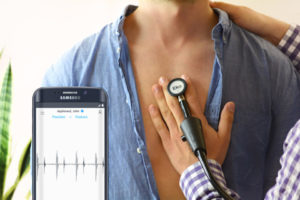
A simple part of your annual exam that has been the front line tool for over two centuries could be the game changer when detecting life threatening conditions. Treating these conditions early could make all the difference.
Technology developed using artificial intelligence (AI) could identify people at high risk of a fatal heart attack at least 5 years before it strikes. This is according to new research funded by the British Heart Foundation (BHF).
Remote Management of Heart Disease
Some of the biggest trends around cardiovascular disease revolve around remote patient monitoring. Remote Patient monitoring is where consultations can be consulted over video calls. Patient reads and information are accessible through a digital platform. The patient uses wearables such as skin patches, accessories and smart clothing to monitor the patient’s condition.
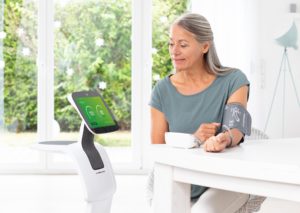 Beyond disease management, remote patient monitoring can help to see if patients are adhering to their current regiments. It is can also be vital for clinical trial monitoring and pre/post op monitoring. The ability to predict or prevent future cardiac events may occur based on the data being relayed. At home innovations are used to monitor hypertension, heart failure and arrhythmias.
Beyond disease management, remote patient monitoring can help to see if patients are adhering to their current regiments. It is can also be vital for clinical trial monitoring and pre/post op monitoring. The ability to predict or prevent future cardiac events may occur based on the data being relayed. At home innovations are used to monitor hypertension, heart failure and arrhythmias.
In-body microcomputers have been developed where a pea-sized V-LAP sensor sits withing the heart. The sensor provides real time data to health professionals. When pressure in the heart elevates, it sends alerts the doctors in time. It charges remotely via an external chest strap that is fitted by the patient. It can collect and transmit data to doctors at anytime.
Do you own an Apple Watch? The optical sensor can detect atrial fibrillation in the background. The market for these items will continue to grow. We live in a world where data is everywhere.
Being able to access that data from the comfort of your home, can alleviate the stress of some patients. In addition, it will help alleviate medical costs by reducing visits to the hospital.
Virtual and Augmented Reality
Virtual and Augmented Reality is the new reality for training medical staff. A training in a VR headset can put the operators in a virtual cath lab with a 360 degree view of the room and equipment. 3-D renderings of diseases vessel segments are viewable as well.
NovaRad has FDA clearance for the first surgical AR system. The surgeon wears an AR headset. He or she can superimpose and co-register a CT or MRI dataset onto a patient on the OR table. They can virtually slice through a patient to pre-plan a procedure and mark the skin for incisions.
Philips Healthcare is developing a cath lab AR system which allows interventional radiologists or cardiologists to use hand movements or voice commands without breaking a sterile field. They will be able to call up an ultrasound in their AR visor. Review CT imaging datasets that they can slice in mid-air or view 3-D holograms of the anatomy. Hand movements rotate or slice the images .
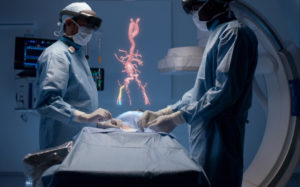
The Future
These are just a few of the technologies out there that are helping improve the lives of cardiac patients. I can only imagine the developments that are to come.
Pets suffer from heart disease as well. Colorado State University is already using cutting edge technology to assist with heart disease in dogs.
Some of these things I could only have imagined in Sci-fi films are now a reality. I only can hope that these developments will help save lives for years to come.
Zunesis already actively works with some medical institutions. My hope would be that some tools that we can provide them will take them to the next level in heart disease prevention.
Aruba UXI Sensor
In early 2018, Aruba announced they were buying Cape networks, the developers of the Cape sensor. Rebranded as the Aruba User Experience Insight (UXI), the sensor sits on your network. It alerts you whenever your network is having problems.
It may not seem like much, but it is an amazing little device that could help IT departments everywhere. When deployed, the Aruba UXI sensor acts like a user on your network, except much smarter. No more complaints about “the internet isn’t working”. Instead, you get personalized alerts telling you exactly what is going wrong. Whether that means DNS is unresponsive, or merely yahoo.com is having an outage.
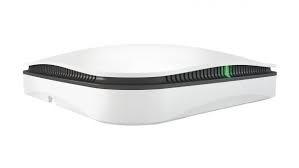
The sensor is designed to work straight out of the box on any network. It just needs to be registered to a dashboard. Then give credentials to the wifi or plug it into the ethernet. It takes so little set up. It can be mailed to a remote site and set up by anyone. All configuration is done in the web portal. All standard tests and alert thresholds come preconfigured. No set up is even needed, though you can definitely still customize it.
Aruba UXI Overview from Aruba Networks / Cape on Vimeo.
Aruba Dashboard
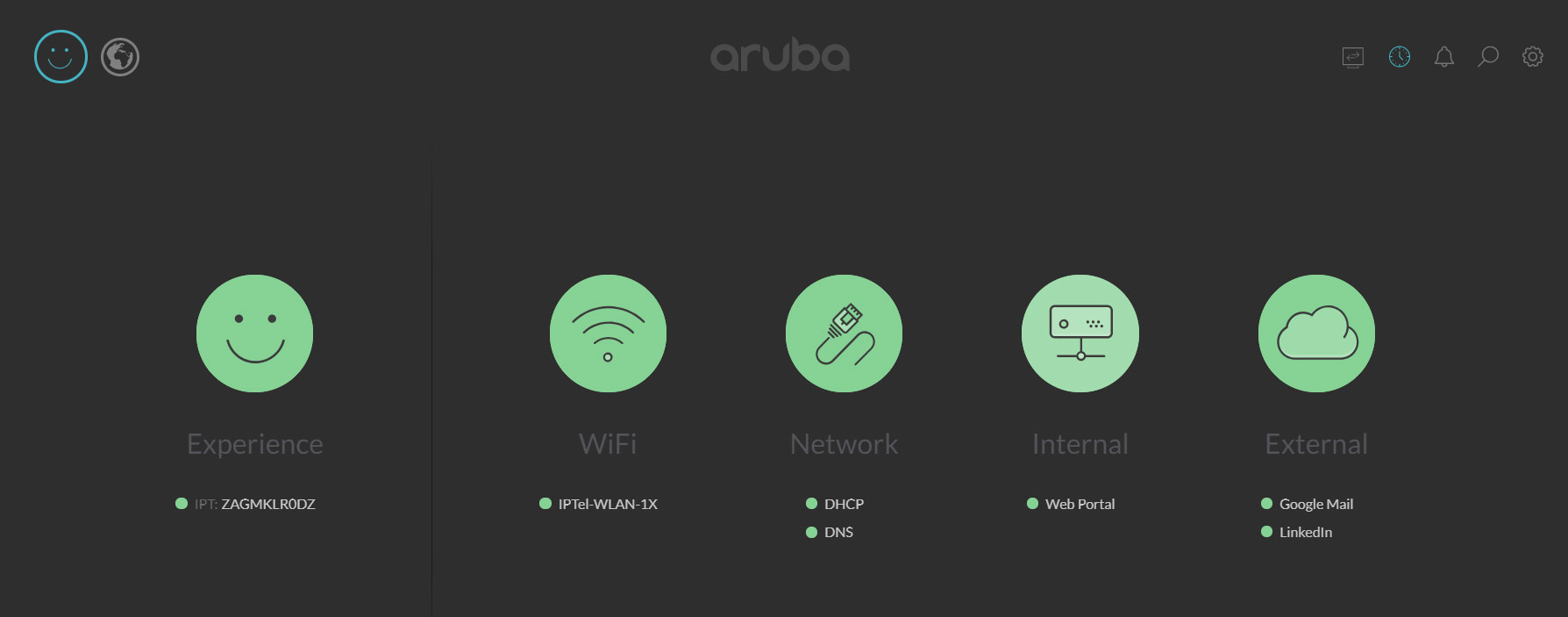
The dashboard is simple and easy to use. It gives you access to a lot of information about your network. Hover over any piece on the home page to get alert info. Then, click to drill down further and see a trove of other information, such as signal strength, channel, response times for things like dns or dhcp, even websites if you set them up.
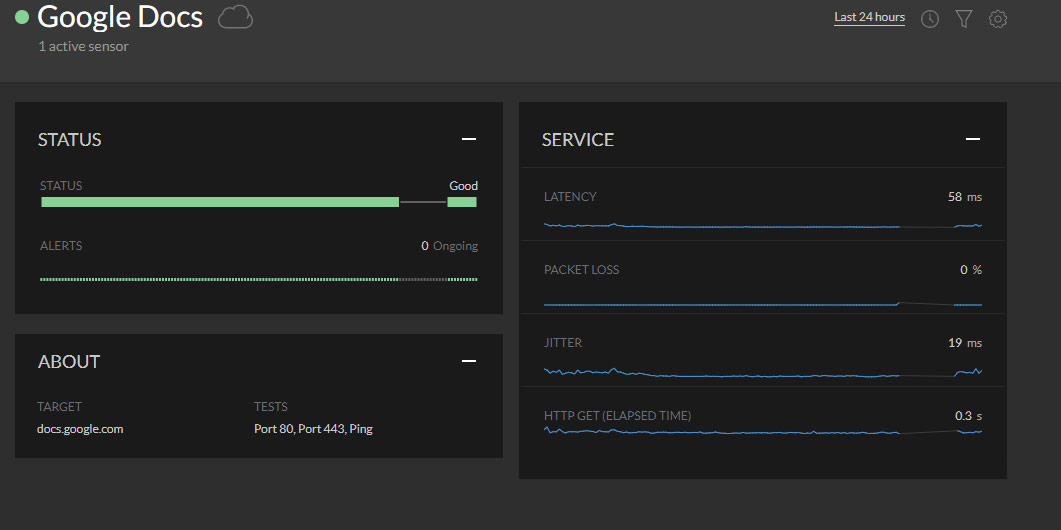
The sensor can be configured to check both internal and external services. Whether you use internal websites and fileshares, or Google docs and Microsoft OneDrive, you can test them all to be sure they are up and running. If they aren’t, the IT department is the first to know.
Proactive Alerts
Alerts are sent via email whenever certain customizable thresholds are met. This enables IT departments to know about a problem before a user has a chance to report it. They will also know exactly what went wrong without having to hunt around for the cause of the issue.
The alert says which service is down. Quickly letting IT know if the entire internet is down, or if its just the DNS service on a server. Website issues can also be shown through the alerts. Knowing exactly whats wrong, quickly enables the IT department to address the issue faster. This results in less down time and less unhappy users.
Cloud Accessibility
The dashboard and all data are hosted in the cloud. This allows for you to access it anywhere, at any time. No need to be on site to diagnose an issue. No worries about not being able to see data and alerts while a site is down.
Diagnosing issues is half the battle in the helpdesk world. Eliminating this problem, enables the IT department to be far more efficient and timely in resolving those issues.
Location, Location, Location
Arubas UXI sensor should be placed in a spot where wifi is used most, or problem areas that you would like more information on. It comes with a couple different ways to mount it. It can also be set on a desk or table just as easily.
A secure mounting bracket can be deployed in public areas without the fear of it disappearing. All it needs is power either provided by the included power adapter, or by a PoE solution. The sensor also isn’t just limited to wifi. It works over ethernet as well, so you can check all network connections at once.
A user experience sensor is a valuable tool for any company, small or large. The key feature is that it enhances the response time of any IT department. Faster response times mean less downtime, which means less time your company is running smoothly. The solution is constantly being updated with more features being added every day to make the jobs of you and your IT department easier.
Contact Zunesis for more information on this solution or other networking products for your organization.
End User-Centric Network and Application Performance Analytics
Increasing reliance on Wi-Fi for Enterprise and IoT applications mean IT departments are facing new challenges to deliver the best user and client experience possible. To provide a consistent level of performance, the Aruba Service Assurance solution enables IT to proactively simulate real-world user and client experiences.
IT can continuously monitor network connectivity and the performance of wireless and Ethernet connections in critical, high-value locations like office spaces, retail, education, healthcare, and similar types of environments.
How it works
The Aruba Service Assurance solution includes simple to deploy sensors, cloud-based data processing and an easy to learn web-based administrative dashboard. It can be accessed from anywhere using either Chrome or Safari browsers.
It’s a great tool for any organization and IT team tasked with delivering the best possible network experience with their user’s connectivity and app performance in mind – especially the “C-suite” or users with cyclical problems reported to the help desk.
Components to the Solution
Purpose-built Sensor
Aruba LTE sensors can be placed within any area where users or IoT devices are located to reduce the time to identify and resolve application responsiveness and user experience issues. The sensor is placed at the same height where user’s devices are placed or held, to run accurate simulated tests over Wi-Fi. Wired connections are also supported.
Tests can be set up for LAN and WLAN connectivity, DHCP, DNS, authentication, captive portal response, cloud and internal applications. Installation of the sensor, even in extremely remote locations is easy due to built-in out-of-band cellular connectivity. This reduces the time and effort normally required to go on-site, diagnose a problem and put a resolution into action.
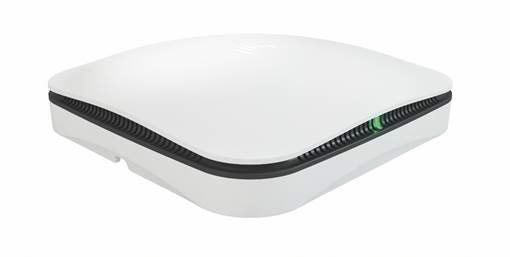
Configuration and visibility: Web-based dashboard
The cloud-based analytics and insights engine provides a robust and scalable model that allows IT to centrally configure and run tests for today’s cloud-based (SaaS) or internal applications. Pre-configured templates or custom defined tests can monitor the most important apps and services. For example, tests can automatically ping a server to confirm responsiveness, or run a script through a browser to see how an application is performing before users encounter a problem.
The web-based service assurance dashboard is designed with simplicity and one-glance visibility in mind. It changes how an assurance dashboard should work. A unique, five-column traffic light model easily lets you see when things are working great and when they’re not.
The status of each sensor, SSID, service and application being tested are highlighted under each of the traffic light icons. This provides IT a good understanding of overall user experience, Wi-Fi connectivity and quality, responsiveness of core network services, and the reachability of internal and external services. Smart notifications can be setup to keep you informed on your mobile device.
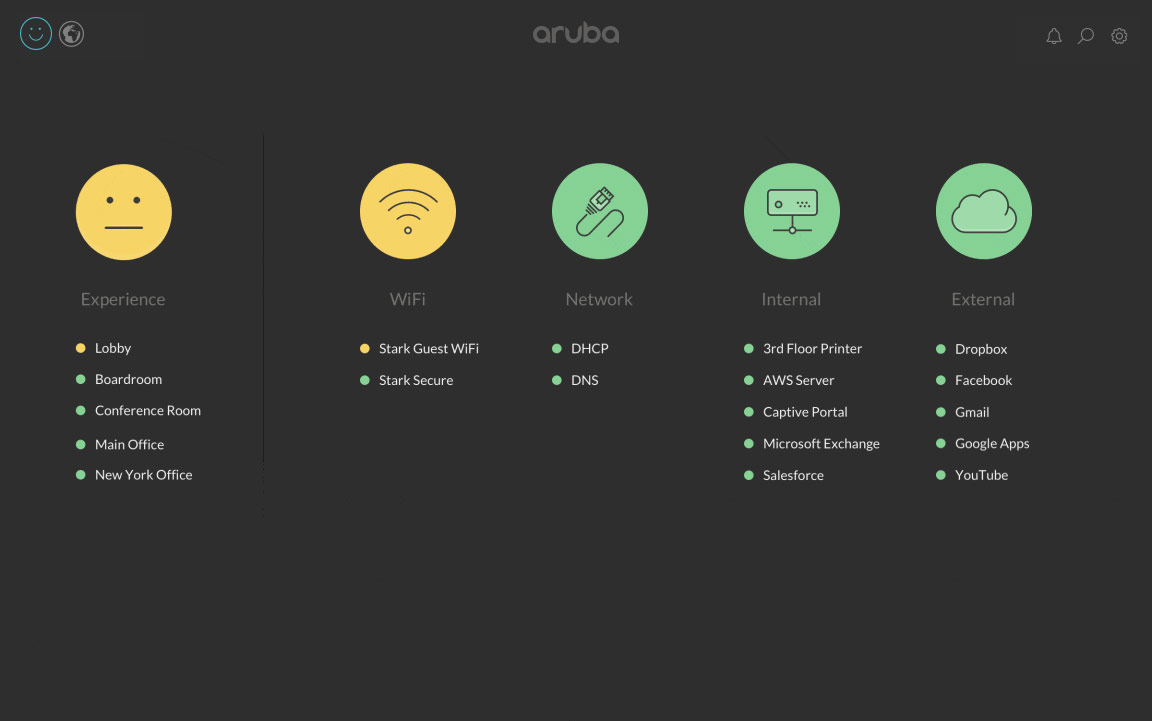
How can Zunesis help?
Zunesis is an Aruba Platinum partner, which is the highest level of achievement. We can help any customer or prospective customer on even a small project with a concern such as we have outlined in this post.
A simple deployment of a single sensor and a 1 year subscription to the data and analytics gathering would cost only about $1200. Zunesis can install a quick test solution for our clients who need to get to the bottom of a tough end-user experience issue through our unique Customer Connect Program. This program provides 2-3 hours of no-cost onsite consulting with customers.
For instance, we could use that time to setup a basic Service Assurance sensor and dashboard. We then provide another hour or two of time after deployment to work with the client on reviewing results of the data gathering.
Plus for that small cost, the sensor is available to use for other testing, and one would simply need to renew the annual service subscription (or purchase up to 5 years up front!).
More Information:
Aruba Networking Service Assurance

